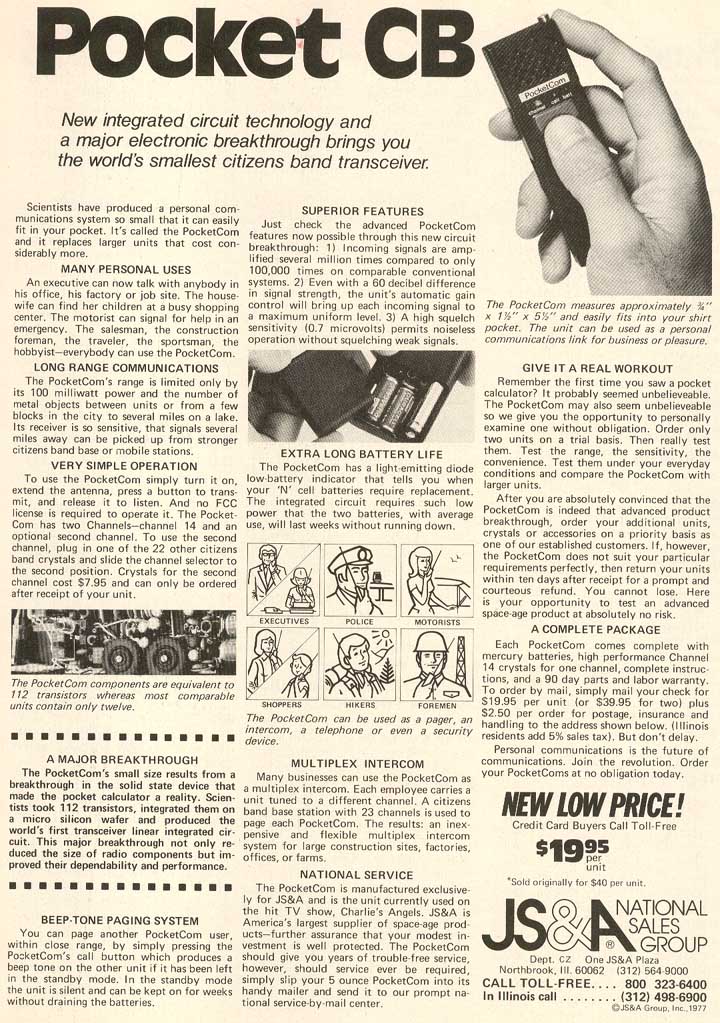|
"The
Dick Tracy wrist radio may no longer be a dream" 
Units
Tested: Last year I was
reading through the August 1976 issue of CB Magazine when I came
across an ad for a rather unusually small handheld CB transceiver.
It is called the "Pocket Comm" advertised as a pocket
CB. It was manufactured for JS&A by Mega Corporation. JS&A
was Americas largest supplier of space age products and Mega
was a leading manufacturer of innovative personal communications
systems according to the full page ad. |
 |
|
Once my wife and
I found the batteries, we went home to try these baby's out.
With batteries installed, it We came to the conclusion that by todays standards, these small CB transceivers are probably not real practical but do infact work for short range comms. I can only imagine that in 1976 these units were quite popular due to the very small size, and found many uses. It appears that these units were first introduced around 1975 but the 1976 ad I have shows them selling for $39.95 each or two for $79.90. In closing I must
mention the rather complete user manual. It starts out with a
description, then offers operating instructions with good side
notes. I was particularly surprised to see a complete schematic
diagram and a board layout diagram, plus a rather These small radios found a home here at the Mojave Desert Mini Museum of retro radios and are a welcome addition. Perhaps someday I can use multiple Pocket Comms for the staff at my dream museum of vintage retro radios. OK, I awoke from my dream now. Thanks to my wonderful wife Pamela (Retro Chick) for helping me evaluate these nifty units. A very special thanks to Woody and his efforts on maintaining a very top quality CB website that brings back the good ol days of radio. Respectfully
submitted, |